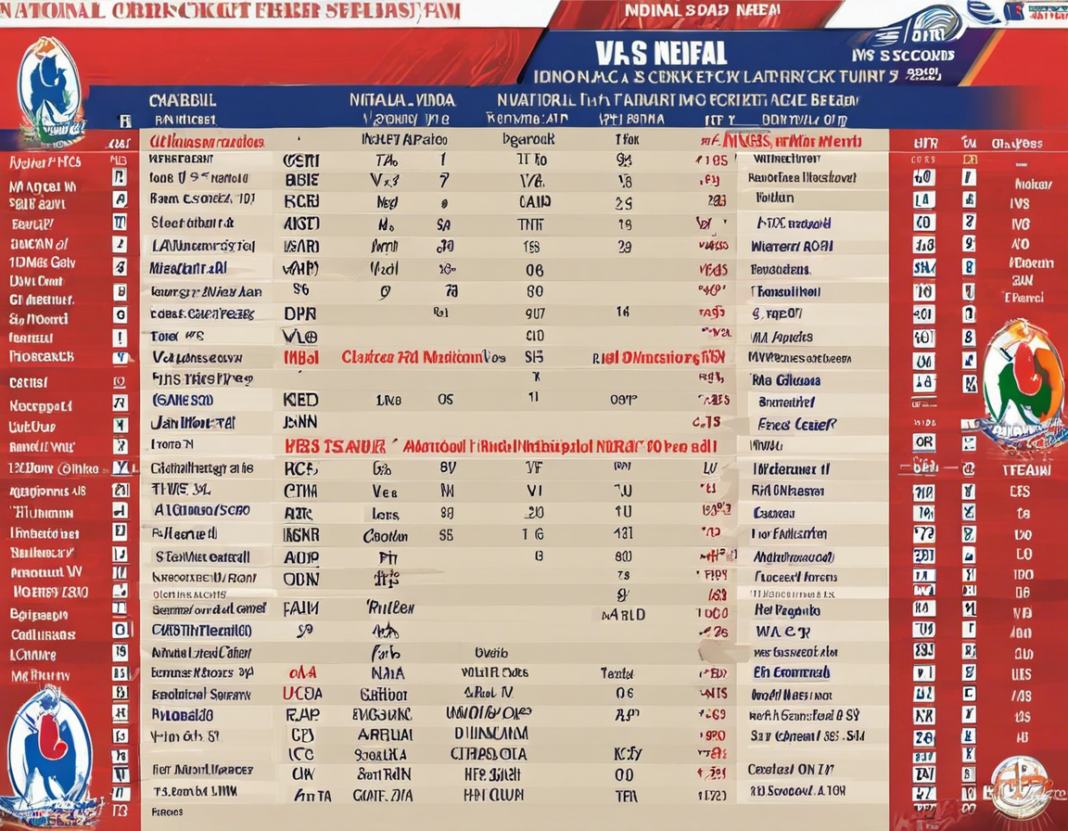Cricket is a sport that unites nations and their people in a shared spirit of competition and sportsmanship. India vs Nepal cricket matches have always garnered attention due to the intense rivalry between the two teams, as well as the passion and talent displayed on the field. As fans eagerly keep track of the match developments, the scorecard becomes a crucial tool for understanding and analyzing the game.
Understanding the Scorecard
What is a Cricket Scorecard?
A cricket scorecard is a visual representation of the performance of both teams in a match. It provides a detailed account of runs scored, wickets taken, overs bowled, and other statistical information.
Components of a Scorecard
-
Team Name and Logo: The scorecard begins with the names and logos of the two competing teams.
-
Match Details: Information such as the venue, date, and format of the match (e.g., T20, ODI, Test) is mentioned.
-
Innings Breakdown: The scorecard is divided into two sections, one for each team’s batting and bowling innings.
-
Batting Statistics: This includes details about each batsman’s performance, such as runs scored, balls faced, strike rate, and dismissals.
-
Bowling Statistics: Information about each bowler’s spell, including overs bowled, runs conceded, wickets taken, and economy rate, is provided.
-
Extras: Any additional runs conceded through no-balls, wides, or leg-byes are tallied separately.
-
Total Score: The total runs scored by each team are displayed prominently.
-
Fall of Wickets: The sequence in which the batsmen got out, along with the score at which each dismissal occurred, is listed.
-
Partnerships: The partnerships between batsmen are outlined to showcase the rhythm and momentum of the batting team.
Analyzing the India vs Nepal Scorecard
Key Metrics to Look For:
-
Top Scorers: Identify the players who contributed the most to their team’s total.
-
Strike Rates: Assess the pace at which batsmen scored their runs to gauge their impact.
-
Wickets Taken: Highlight bowlers who were most successful in dismissing the opposition.
-
Economy Rates: Evaluate how economically bowlers contained the run flow.
-
Extras: Keep an eye on extras as they can significantly impact the game’s outcome.
Sample Scorecard Snapshot:
India Batting:
-
Rohit Sharma: 72 runs (45 balls) | Strike Rate: 160.00
-
Virat Kohli: 56 runs (60 balls) | Strike Rate: 93.33
Nepal Bowling:
-
Sandeep Lamichhane: 4 overs, 2 wickets, Economy 5.25
-
Karan KC: 3 overs, 1 wicket, Economy 7.33
India Total: 175/5 in 20 overs
Crucial Match Moments
-
Opening Partnership: A solid start by India’s openers set the tone for a formidable total.
-
Middle Order Collapse: Nepal’s bowlers struck back with quick wickets in the middle overs.
-
Death Overs Surge: India finished strongly with a flurry of boundaries in the death overs.
FAQs (Frequently Asked Questions)
1. How is a batsman’s strike rate calculated?
- The strike rate is calculated by dividing the number of runs scored by the number of balls faced and then multiplying by 100.
2. What is the Duckworth-Lewis method in cricket?
- The Duckworth-Lewis method is a mathematical formula used to recalculate targets in limited-overs matches affected by weather interruptions.
3. What does ‘LBW’ stand for in cricket scorecards?
- ‘LBW’ stands for Leg Before Wicket, a mode of dismissal where the ball hits the batsman’s leg before the bat, and the umpire rules it out.
4. How are extras categorized in cricket scorecards?
- Extras include runs scored off no-balls, wides, leg-byes, and byes. They are tabulated separately in the scorecard.
5. What is the significance of the ‘Fall of Wickets’ section in a scorecard?
- The ‘Fall of Wickets’ section shows the sequence in which batsmen were dismissed, providing insights into the team’s batting collapse or resilience.
In conclusion, a cricket match scorecard serves as a comprehensive record of the game’s progression, highlighting individual performances and pivotal moments. Analyzing the scorecard enables fans and experts to delve deeper into the nuances of the match and appreciate the skills and strategies employed by the players. Whether it’s an India vs Nepal clash or any other game, the scorecard remains a fundamental tool for cricket enthusiasts worldwide.




